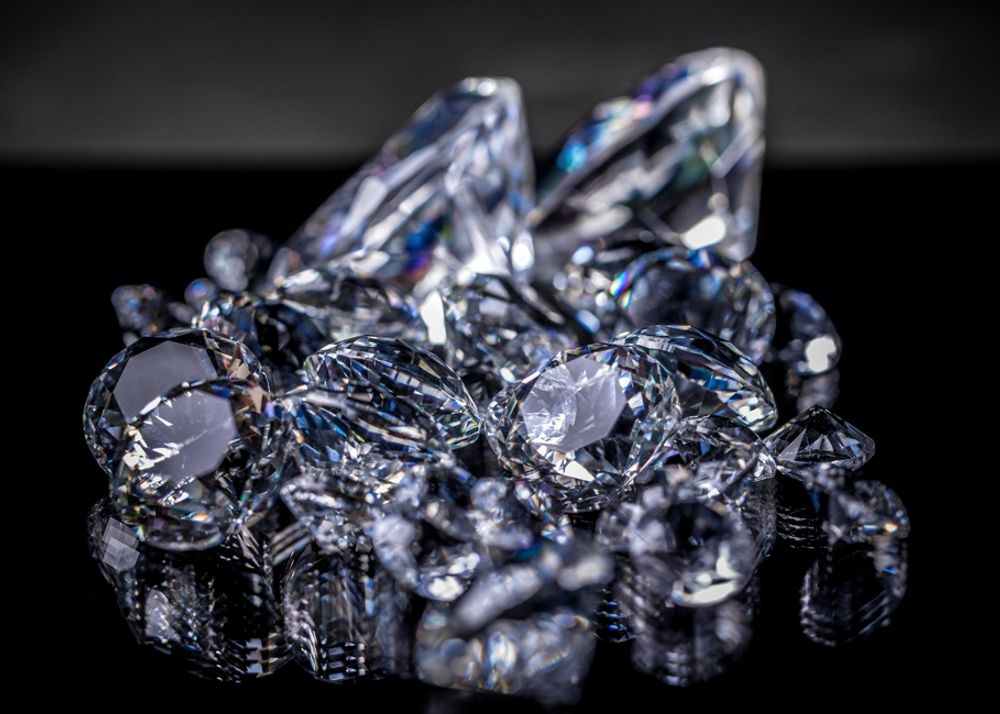Can You Tell the Difference Between Mined and Lab-Grown Diamonds?


In the past, the choice was easier. If you could afford a diamond, you would buy one. If not, or if you wanted a larger stone, you could buy a diamond simulant like cubic zirconia, moissanite, or white topaz. But now diamond buyers have a third choice: lab-grown diamonds. While diamond simulants look like diamonds, there are subtle differences between the various simulants and real diamonds. Even to the untrained eye, something about it might look just not right. But can you tell the difference between a mined diamond and a lab-grown diamond?
Hardness
First of all, how would you go about differentiating between the two? A diamond is the hardest natural substance, which means that only a diamond can scratch another diamond. Cubic zirconia has a hardness of 8.5, while moissanite is almost as hard as a diamond at 9.5 on the Mohs scale. Lab-grown diamonds, however, have a hardness of 10. This is because they are diamonds, not diamond simulants. That is, they are composed of 99.95% carbon, just like mined diamonds.
Optical Properties
So the scratch test is out. We’re analyzing a picture anyway, so let’s look at optical properties next. When we alluded to something being “off” about diamond simulants, we are referring to optical properties. Diamonds are unique among gemstones in that light rays do not pass through the diamond but are reflected back at different angles. The effects this reflection creates are called “brilliance” and “fire,” and diamonds are cut to maximize these effects. The way light bounces around a diamond means that one cannot look “through” a diamond, as the light doesn’t pass through but is reflected back out. Diamond simulants do not have these properties, but lab-grown diamonds do. That means there is no way to tell the difference between a mined diamond and a lab-grown diamond just by looking at it.
Is It Possible to Tell the Difference Between Mined and Lab-Grown Diamonds?
While it’s nearly impossible to tell the difference between the two with the naked eye, there are some other steps you can take to differentiate between the two. About 1/3 of mined diamonds exhibit fluorescence, which means that they glow under ultraviolet light (such as a blacklight). Lab-grown diamonds are never fluorescent. If a diamond does not exhibit fluorescence, there is a chance that it is lab-grown, but then again, 2/3 of mined diamonds are fluorescent. Complicating matters further, fancy-color diamonds, both mined and lab-grown, can exhibit fluorescence. So fluorescent light won’t help, either!
The only way to tell the difference between a mined diamond and a lab-grown diamond is to have a gemologist perform an infrared spectroscopy analysis. It works like this: different chemical elements absorb different wavelengths of light. A diamond, whether mined or lab-grown, is nearly pure carbon, but it contains traces of other elements. Typically, mined diamonds will contain more nitrogen than lab-grown diamonds.
As you probably noticed by now, only a lucky guess will let you differentiate between the two with the naked eye. Not even an experienced gemologist can tell the difference without the right tools. That’s because mined diamonds and lab-grown diamonds have the same exact chemical composition, which give them the same exact gemological properties. It is those properties that give a diamond its distinctive brilliance, fire, and sparkle. So whatever your reasons for choosing lab-grown diamonds, you can be assured that you’re getting a gemstone chemically identical to mined diamonds, with the durability and beauty simulants just can’t provide.